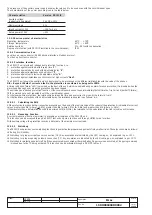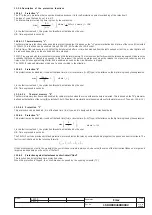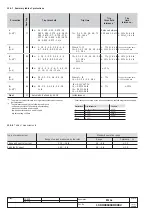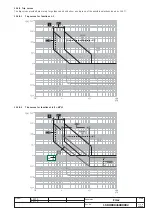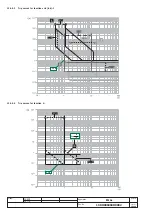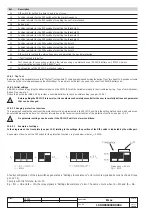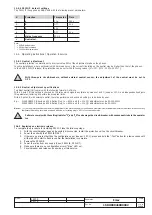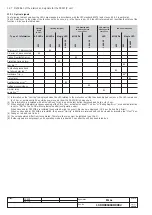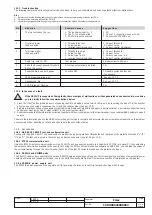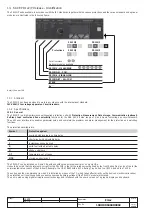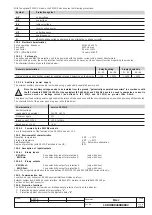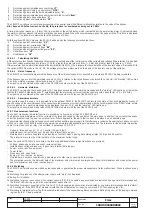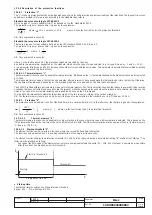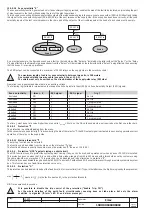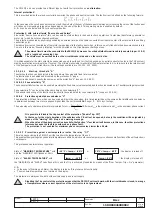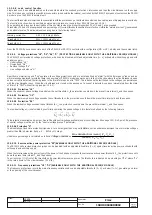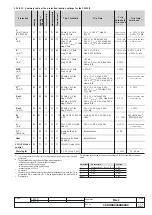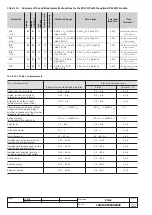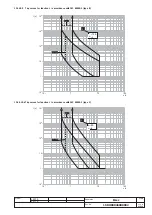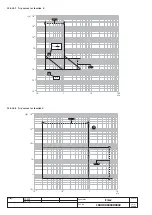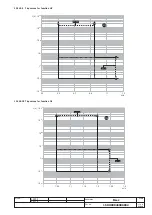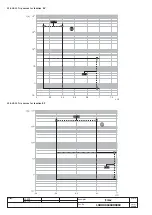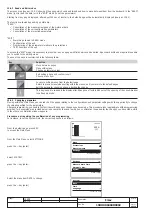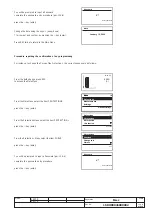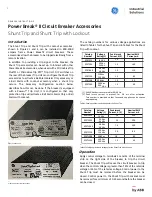
L2234
Emax
46/158
Model
Scale
Page No.
Doc. No.
Apparatus
1SDH000460R0002
L2778
Area 1
RELAY
1a
RELAY
1b
ZSO
ZSO
1a
1b
RELAY
1
ZSI
1
ZSO
1
Area 2
Area n
○
○
○
○
RELAY
2
ZSI
2
ZSO
2
RELAY
0
ZSI
0
RELAY
n
ZSI
n
ZSO
n
○
○
○
○
13.2.9.2.3 Zone selectivity “S”
The zone selectivity function, guaranteed only if an auxiliary voltage is provided, enables the area of the fault to be isolated, only isolating the part
of plant nearest to the fault, while keeping the rest of the plant operational.
This is done by connecting all the zone selectivity outputs of the releases belonging to the same zone to one another (ZSO=K51/SZout) and taking
this signal to the zone selectivity input (ZSI=K51/SZin) of the next release on the supply side. If the wiring has been done correctly, all the zone
selectivity inputs of the last circuit-breakers in the chain and all the outputs of the circuit-breakers at the head of each chain must be empty.
As a practical example, the figure above shows a fault on the load side of the "Relay 1a" isolated by the latter without the "Relay 1" or the "Relay
0" being affected; a fault immediately downstream from the "Relay 1" will be isolated by the latter without the "Relay 0" being affected, thus ensuring
that the Areas 2...n remain operational.
The ZSO output can be connected to a maximum of 20 ZSI relays on the supply side in the selectivity chain.
The maximum length of cable for zone selectivity, between two units, is 300 meters.
Use corded shielded two-wire cable (see note A to par. 11.2.2).
The shield must only be earthed on the circuit-breaker of the supply-side relay (ZSI side).
Operation is only guaranteed when there is an auxiliary voltage.
The following logical table is implemented to manage the Zone Selectivity Input (ZSI) and Zone Selectivity Output (ZSO) signals:
Zone selectivity
Imax > I
2
ZSI signal
ZSO signal
Trip T
Excluded
NO
0
0
No trip
Excluded
NO
1
0
No trip
Excluded
YES
0
0
t
2
programmed
Excluded
YES
1
0
t
2
programmed
Inserted
NO
0
0
No trip
Inserted
NO
1
1
No trip
Inserted
YES
0
1
t
selectivity
Inserted
YES
1
1
t
2
programmed
The time t
2
must be set at a value higher than or equal to t
selectivity
+50ms, on the CB on the supply side, not required on the first one in the chain.
13.2.9.3
Protection “I”
The protection is enabled/disabled from the menu.
In the case where zone selectivity "S" is active, during the trip of the relay for "I", the ZSO output signal is activated in any case to guarantee correct
operation of the relay on the supply side.
13.2.9.3.1 Start-up threshold “I”
The start-up function can be selected.
The function can be enabled from the menu on the protection "I" page.
The function behaves in exactly the same way as the protection "S" (see par. 13.2.9.9.2).
13.2.9.4
Protection “MCR” against closing on short-circuit
The MCR function is used to protect the system against closing, if any, on short-circuit, and operates only when a Vaux or PR120/V is installed.
This protection goes on when the CB is closed, within a time window ranging from 40 to 500ms and with a threshold as set by customer, using
the same algorithm as protection I. This protection can be disabled and is an alternative to protection “
I
”.
This function can be activated through a hand-held PR010/T unit via SD-Testbus2 and SD-Pocket softwares or through a remote system via a system
bus. This function has one fixed-time protection curve only.
13.2.9.5
Protection “G”
This protection can be disabled; it can be of the fixed time (t=k) or inverse time (t=k/i
2
) type; in the latter case, the trip time is given by the expression:
÷
÷
ø
ö
ç
ç
è
æ
,
2
I
2
max
t
4
where I=I
f
/I
4
, I
f
is the fault current and I
4
is the protection threshold.
NB: Time expressed in seconds.
It is possible to disable the trip control of the protection ("Enable Trip: Off").
For the whole duration of the earth fault, circuit-breaker opening does not take place, but only the alarm
condition is signaled ("Alarm" LED lit and alarm message).

